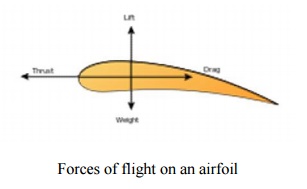Chapter: Mechanical : Automobile Engineering : Vehicle Structure and Engines
Resistances to vehicle motion and need for a gearbox

Resistances to vehicle motion and need for a gearbox
Aerodynamics
Aerodynamics, from Greek ἀήρ aer (air) + δυναμική
(dynamics), is a branch of dynamics concerned with studying the motion of air,
particularly when it interacts with a solid object, such as an airplane wing.
Aerodynamics is a sub-field of fluid dynamics and
gas dynamics, and many aspects of aerodynamics theory are common to these
fields. The term aerodynamics is often used synonymously with gas dynamics,
with the difference being that "gas dynamics" applies to the study of
the motion of all gases, not limited to air.
Modern aerodynamics only dates back to the
seventeenth century, but aerodynamic forces have been harnessed by humans for
thousands of years in sailboats and windmills, and images and stories of flight
appear throughout recorded history, such as
the Ancient Greek legend of
Icarus and Daedalus. Fundamental concepts of continuum, drag, and pressure
gradients, appear in the work of Aristotle and Archimedes.

Fundamental Concept
Understanding the motion of air around an object (often called
a flow field) enables the calculation of forces and moments acting on the
object. In many aerodynamics problems, the forces of interest are the
fundamental forces of flight: lift, drag, thrust, and weight. Of these, lift
and drag are aerodynamic forces, i.e. forces due to air flow over a solid body.
Calculation of these quantities is often founded upon the
assumption that the flow field behaves as a continuum. Continuum flow fields
are characterized by properties such as velocity, pressure, density and
temperature, which may be functions of spatial position and time.
These properties may be directly or indirectly measured in
aerodynamics experiments, or calculated from equations for the conservation of
mass, momentum, and energy in air flows. Density, velocity, and an additional
property, viscosity, are used to classify flow fields.
Related Topics